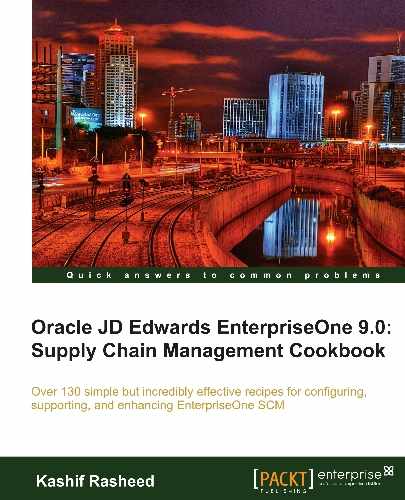The shipping documents, that is, bills of lading and delivery reports, can be printed before shipping the order.
You should set up the processing options to set default values and define how the system should process the data, control printing options, and also specify the default currency.
- Access the Bill of Lading (Shipping Document) from the G42111 menu and set up the processing option of R42530.
- The Default 1 tab indicates the next status in the order flow. Enter a Status Code value by selecting the UDC (40/AT) that indicates the next step in the order flow of the line.
- On the Defaults 2 tab, enter Override Next Status by selecting the UDC (40/AT) that specifies the next standard step in the processing cycle for this order type. You set up the steps for the processing cycle on the Order Activity Rules form.
- Next Status code specifies whether the system updates the next status code from the order activity rules.
- In the Display future committed inventory window, specify whether the system should display future committed inventory.
- In the Process tab, specify the units of measurement that are used to calculate the volume and weight.

- Specify the Volume of UOM as the unit of measurement that is used to calculate the volume.
- On the Print tab, you will notice that the system prints kit components by default. Enter 1 against the second option if you do not want the system to print Kit Components.
- On the fourth option, you need to enter the type of cross-reference to use in order to retrieve the customer item number.
- The Print serial numbers option specifies whether the system prints serial numbers.
- The Print Additional Header Text option specifies whether the system prints additional header text.
- The Currency Processing option determines the currency to print. The Type of Currency to Print option specifies whether the system prints values in the domestic currency, the foreign currency, or both.

Shipping documents accompany the order to its destination. Delivery personnel can use these documents to compare what they are supposed to deliver with what they are transporting. A bill of lading lists this information for the order. It includes the item description, quantity, weight, and volume. Billing documents include the customer address and price. Shipping documents include the shipping instructions, total weight, and total volume. Delivery documents include signature lines for the driver and the customer. You can specify the heading that prints at the top of the document, such as bill of lading, when you run the program. Because a shipping document has signature lines for the delivery person and the customer, you can also use it as a receipt.
If you use EnterpriseOne Demand Scheduling (40R) , the report displays these fields in a column labeled Date/Time.
